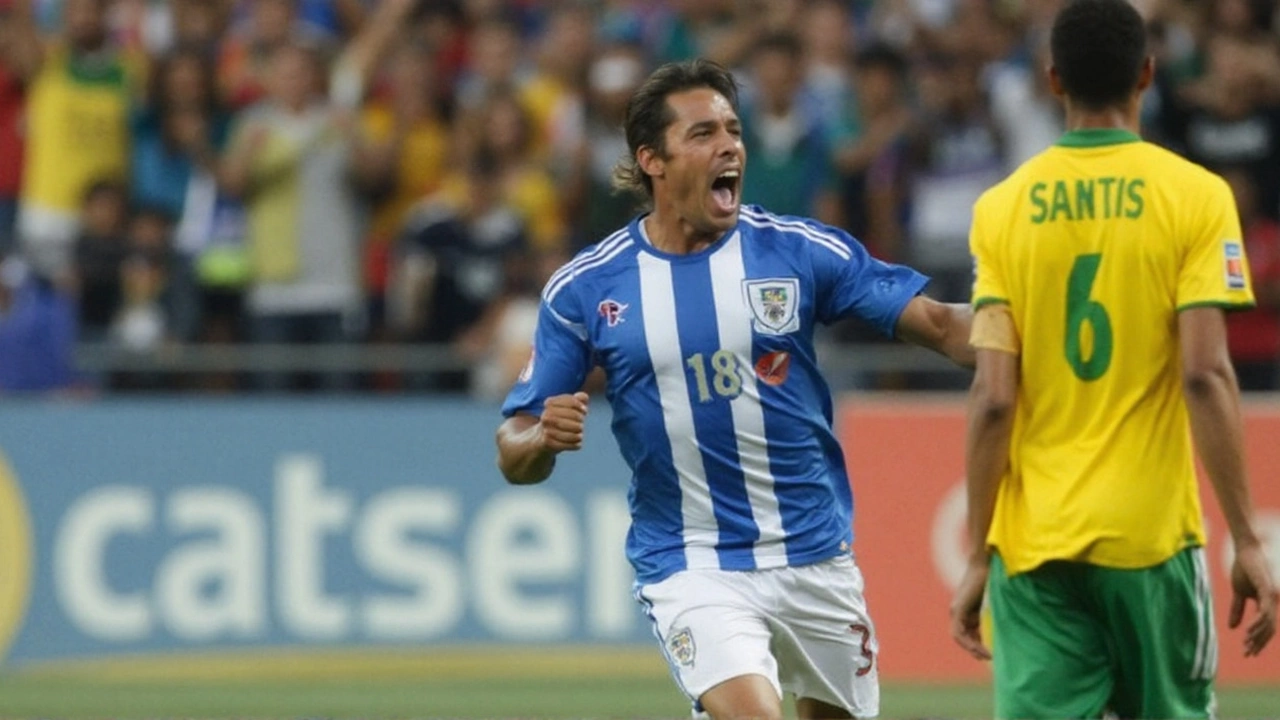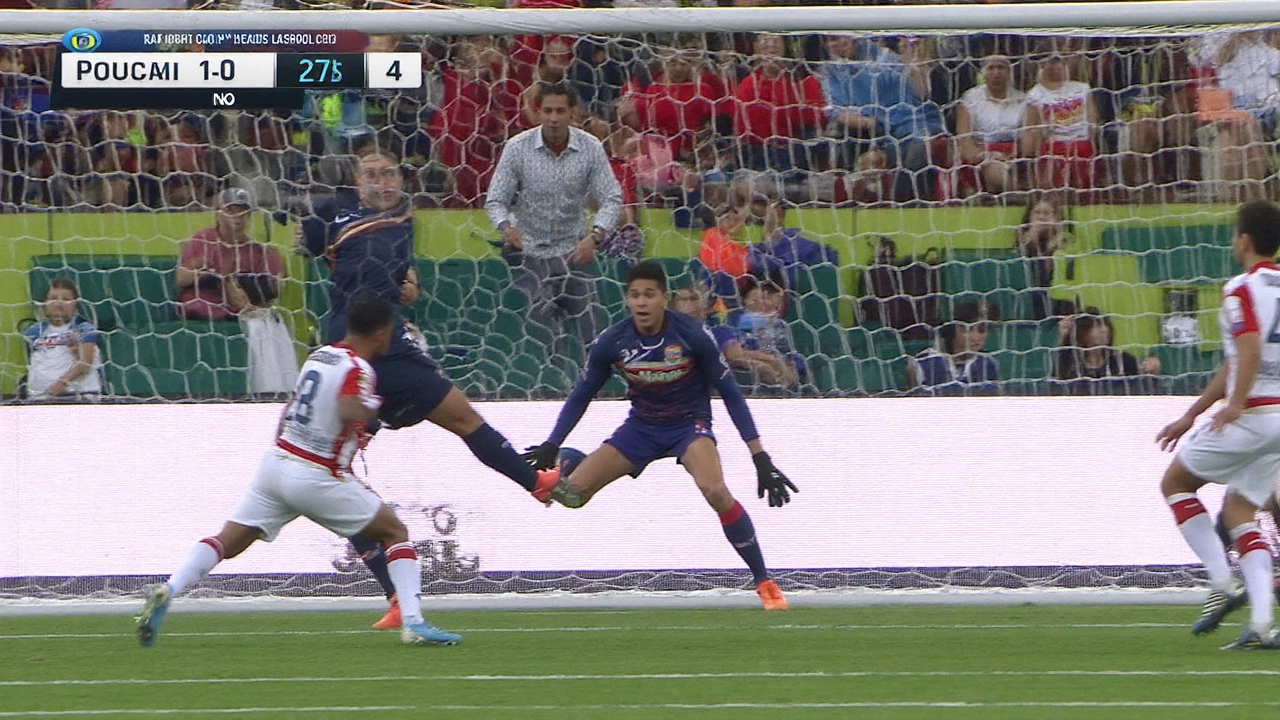One clean touch in a crowded box swung a tense Central American clash. With the game on a knife-edge, Tomás Rodríguez sprinted across his marker and met a cushioned header with a crisp volley, giving Panama the lead they had been chasing against a stubborn Guatemala side. It was the kind of finish that drains the noise from a back line and changes the tone of a night.
The goal wasn’t a lucky break. It was a direct product of timing and trust. Fidel Escobar spotted space early and dropped a long diagonal into the channel. Amir Murillo arrived on cue, not to shoot, but to nod the ball into the dangerous pocket where strikers love to live. Rodríguez did the rest—quick first step, body across the defender, laces through the ball before Nicholas Hagen could set his feet.
How the move unfolded
Panama had looked for this pattern all evening. Instead of threading every attack through midfield, they mixed play: one phase short, the next one long into wide areas to stretch Guatemala’s compact block. When Murillo pushed high on the right, he pulled a defender with him. That left a seam between center-back and full-back, and Escobar didn’t hesitate. The weight of that pass made the header possible; the quality of the header made the volley inevitable.
Rodríguez’s positioning mattered most. He started on the blind side of his marker, then curved his run between the posts just as Murillo glanced the ball down. The touch was firm but true, leaving a half-height strike—awkward for a keeper to smother and too quick to catch. Hagen, who had already kept Guatemala in the game with sharp stops, had no real chance this time.
Up to the goal, Panama leaned on their spine. Orlando Mosquera handled the early nerves with authority, punching crosses cleanly and holding anything hit straight. The back line stepped tight to Guatemala’s forwards, which kept second balls from turning into chaos. When Guatemala tried to play through midfield, the first pass out was often pressured, forcing them wide and buying Panama time to reset their shape.
Guatemala were far from passive, though. They settled into a mid-block, broke on cues, and tested the flanks. Their best moments came when they worked quick combinations on the wings and forced set pieces. You could see the plan: squeeze the central lanes, win the next duel, and spring runners beyond Panama’s full-backs. It nearly paid off more than once, but Mosquera’s handling and the back line’s recovery runs held up.
After the opener, the game opened just a little. Panama found more room between the lines as Guatemala chased the equalizer. Quick counters became a threat, especially when Panama’s wide players drove at isolated defenders. Guatemala, meanwhile, doubled down on direct entries and second-phase shots from the edge of the area. The battle tilted toward set pieces and first contacts inside the box—a classic Central American script.
Hagen kept Guatemala alive with two key interventions after the goal—one low, fingertip save at the near post and another brave claim under pressure. His decision-making was sharp, and his distribution helped Guatemala move upfield faster. On the other end, Mosquera matched him. One reaction stop and a late claim under a high ball took the sting out of Guatemala’s late push.
Discipline told the rest of the story. Panama committed tactical fouls when they had to without slipping into panic. Guatemala kept their shape well and avoided losing their cool, which allowed them to stay in the game until the final minutes. The margins were thin; the difference was a single clean sequence and a striker who read it a beat quicker than everyone else.
- Key pattern: diagonal to the flank, headed layoff, striker runs across the front post.
- Standout keepers: Hagen’s shot-stopping and Mosquera’s aerial control steadied both teams.
- Physical tone: tight duels, heavy traffic on set pieces, few clear looks from open play.

Why it matters for both sides
The stakes around this window are real—points, seeding, and rhythm heading into the next stretch of regional play. For Panama, this kind of win reinforces a steady build under coach Thomas Christiansen. They’ve built an identity around structure and speed: press in waves, play forward early when it’s on, and trust the back line to manage space behind. This match fit that template. The goal came off a direct trigger, supported by a compact defense that gave up little in Zone 14.
Panama’s rise over the past few years hasn’t been a fluke. They’ve mixed experienced operators with mobile, hungry forwards, and leaned into a pragmatic style that still leaves room for quality in the final third. Nights like this show why they’ve become a problem for regional rivals: they don’t need many chances when they control the pace and territory.
For Guatemala, the performance underlines progress under Luis Fernando Tena. The organization is tighter, the distances between lines are smaller, and the transitions are cleaner than in past cycles. Even chasing the game, they didn’t unravel. The spine stayed compact, and the wide players tracked back hard. If they add a sharper final ball and cleaner decision-making at the top of the box, that structure will start turning into results more often.
Zoom out, and the matchup reflects the broader theme in Central America right now: tight margins, heavy emphasis on details, and results decided by single moments. Set pieces, second balls, and striker movement inside the six-yard box are winning or losing nights. That’s why Rodríguez’s habit of slipping off shoulders matters so much. He doesn’t need volume. He needs one defender to glance the wrong way and one teammate to deliver the right service.
The ripple effects are straightforward. Panama bank momentum and the kind of clean, confidence-building tape coaches love to show in analysis: good spacing, quick decisions, and a composed finish under pressure. Guatemala leave with enough positives to carry into the next fixture—keeper form, defensive shape, and the sense that they can live with one of the region’s strongest outfits when they match intensity.
If you’re tracking selection notes, this game nudges a few debates. Rodríguez strengthens his case as a starting nine in matches that demand penalty-box craft over back-to-goal wrestling. Escobar’s range of passing remains a weapon against mid-blocks that try to choke short buildup. Murillo reminded everyone he’s more than a defender; his timing in the final third changes the picture.
What comes next will test depth. A quick turnaround in this window usually means fresh legs and small tactical tweaks—maybe a more patient buildup against opponents who sit deeper, or a higher line if chasing an early goal. For Guatemala, expect more work on final actions: cutbacks instead of hopeful crosses, and combination play at the top of the box to create higher-quality shots. For Panama, the challenge is to bottle this balance—measured risk with the ball, ruthless protection without it—and carry it into the next ninety.
In the end, it was a classic regional battle defined by one clean move and a striker with the calm to finish it. The margins were slim, the work was hard, and the lesson was simple: in games like this, one well-timed run can be worth an entire night of pressure.

